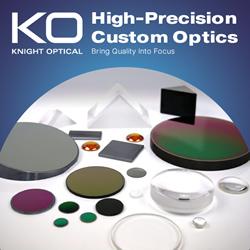Essentially, USAR robots act as the eyes and ears in environments that that are too difficult or too dangerous for humans to go.
Disasters Are Good For Unmanned Systems
William Finn | Amrel
Reprinted with permission from the Amrel blog:
Suppliers of military unmanned systems are constantly on look out for possible civilian applications. One promising civilian application is their use in disaster response. Unmanned Ground Vehicles crawl through the rubble of destroyed buildings looking for survivors. Unmanned Aerial Vehicles and Unmanned Underwater Vehicles inspect buildings, bridges, wharfs, and other structures for damage and structural integrity. Unmanned systems used in response to disasters are referred to as “Search-And Rescue” (SAR) or “Urban Search and Rescue” (USAR).
Essentially, USAR robots act as the eyes and ears in environments that that are too difficult or too dangerous for humans to go. Preserving the safety of human rescuers is not a trivial concern. According to Center for Robot-Assisted Search and Rescue (CRASAR), 135 rescuers died in rescue operations in response to a Mexico City earthquake.
Unmanned systems operating in irradiated areas of a nuclear accident is the classic example of a dangerous and hard-to-reach environment. Recently, the Japanese utility TEPCO sent a 2-foot long, snake-shaped robot into severely radioactive areas of the Fukushima reactor to collect temperature and radiation data. The video images created by this robot are the first we have seen of the damaged containment chamber. The information collected by this and other unmanned systems are expected to be critical in removing radioactive debris. For more information on the role of unmanned systems in the Fukushima disaster, see this blog’s post, Where are the Japanese robots?
The first known use of USAR robots was in response to the 9/11 bombing of the World Trade Center. Personnel from Foster-Miller, iRobot, University of South Florida, NAVSEA SPAWAR, DARPA, CRASAR operated or contributed upwards to 17 unmanned systems. This disaster highlighted the potential of USAR unmanned systems as well as the need for further development. Read more about the use of robots at the World Trade Center here.
Since then, USAR robots have been used over dozens of times, as indicated by the following table.
Source CRASAR
All USAR unmanned systems (ground, aerial, and marine) are remotely operated. Autonomous systems are not used due to real-time needs. Operators had expected that mobility and hardware capabilities would present the biggest challenges. Instead, Human-Robot Interactions and sensor limitations have been the leading problems.
This short video gives an excellent introduction to USAR robots as well as the CRASAR’s role in deploying them.
The voice you hear in the above video is Professor Dr. Robin Murphy, Director of CRASAR. She has been indefatigable in promoting USAR. Below is an interview with her discussing USAR unmanned systems and their role following 9/11.
Probably, the biggest single limitation to widespread deployment of USAR robots is money. Institutions are willing to invest in machines that replace expensive workers. They are more reluctant to expend resources on costly hardened systems that may be used rarely or never at all. In the above referenced blog post on the Fukushima disaster, I concluded that financial concerns were the major factors in the lack of an unmanned system response.
USAR robots save lives and hold the promise to limit the monetary consequences of disasters. Governments and other institutions should be heavily investing in them. It remains to be seen if the deadly combination of short-sighted economic concerns and wishful thinking can be overcome, so the full potential of USAR robots can be realized.
The content & opinions in this article are the author’s and do not necessarily represent the views of RoboticsTomorrow
Comments (0)
This post does not have any comments. Be the first to leave a comment below.
Featured Product


